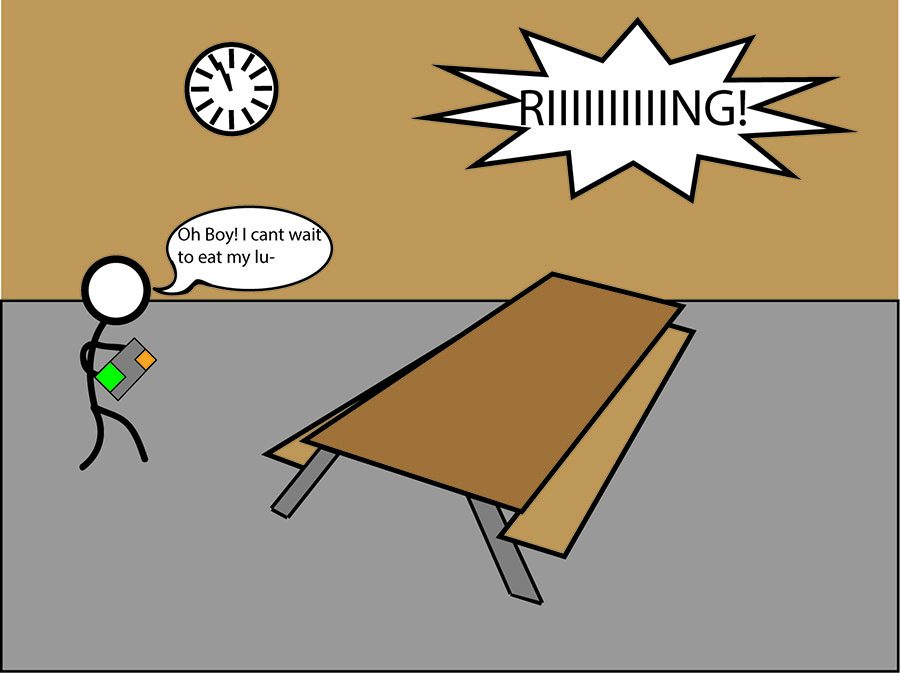Shorter Lunch Decreases Testing, Study Time
RHS has one of the shortest lunches in MCPS. Due to the time constraint, students struggle to make up tests and get extra help.
May 15, 2019
It is a frustrating scenario that both students and staff face on a daily basis — trying to get work done, get help, socialize or take a break from classes during lunch, only to be suddenly interrupted by the bell for sixth period.
RHS should make lunch longer by taking time off each class period and adding it to the lunch period. This will have a positive impact on both students and teachers by giving them the ability to maximize their productivity as well as take a rest from their intense schedules.
The current 40-minute lunch period is among the shortest in Montgomery County, as neighboring schools such as Richard Montgomery and Gaithersburg high schools have up to 50 minutes for lunch. On days with modified schedules, such as half days, RHS lunch can be as short as 30 minutes. In addition, the 40 minutes for lunch do not include the five-minute passing time after fourth period that students get between classes, further reducing the time that can be spent eating, working, socializing or resting.
Extending lunch has many advantages, including giving students more time to socialize, get help from teachers, work on assignments, eat healthier or just take a much-needed break from their exhausting schedules.
Increasing lunch time will reduce the workload at home for students and teachers by giving them more time to work at school. During the lunch period, teachers may give help to students or take the time to enjoy a brief break from teaching. Increasing the length of lunch would give teachers adequate time to re-teach material, grade assessments and assignments and give help to students, spanish teacher Jessica Rosenthal said.
Lunch is a valuable period for students to make up assessments that they missed or wish to redo. The 40-minute lunch period, however, is not enough time for students to fully make up those tests, as it is shorter than the 47 minutes students have to complete assessments during class. Furthermore, the time it takes for the student to walk to the classroom and be given the assessment eats up even more precious time.
In addition to not giving students enough time to make up assessments, having a short lunch also negatively impacts their eating habits. As reported in a 2012 Minyanville article, professor Karen Le Billon, author of “French Kids Eat Everything,” emphasized that giving children a shorter lunch break teaches them that food is an inconvenience, and that eating is a disruption in the day rather than an important part of a daily routine. As a result, children can potentially carry their unhealthy eating habits into their adult lives.
To combat the drawbacks that the 40-minute lunch period has on students and teachers, RHS should make the lunch period longer by shortening each period by one minute and adding that time to the lunch period. If this is done, lunch will be 47 minutes long — the same length as regular class periods.
Additionally, second period, which is currently 53 minutes long due to the morning announcements, can be shortened by three minutes; on many days, the announcements do not last more than two minutes and thus do not require the extra six minutes allotted. This way, RHS will have 50 minutes for lunch, a significant improvement for students and staff, and more in line with many other schools in the county.
After years of frustrating teachers and students with a short lunch, it is the right time to extend lunch. The effect on class time is minimal and an extended lunch would improve the mental and physical health of students, while also giving everyone more time to enjoy their brief respite from their long day of academics.




